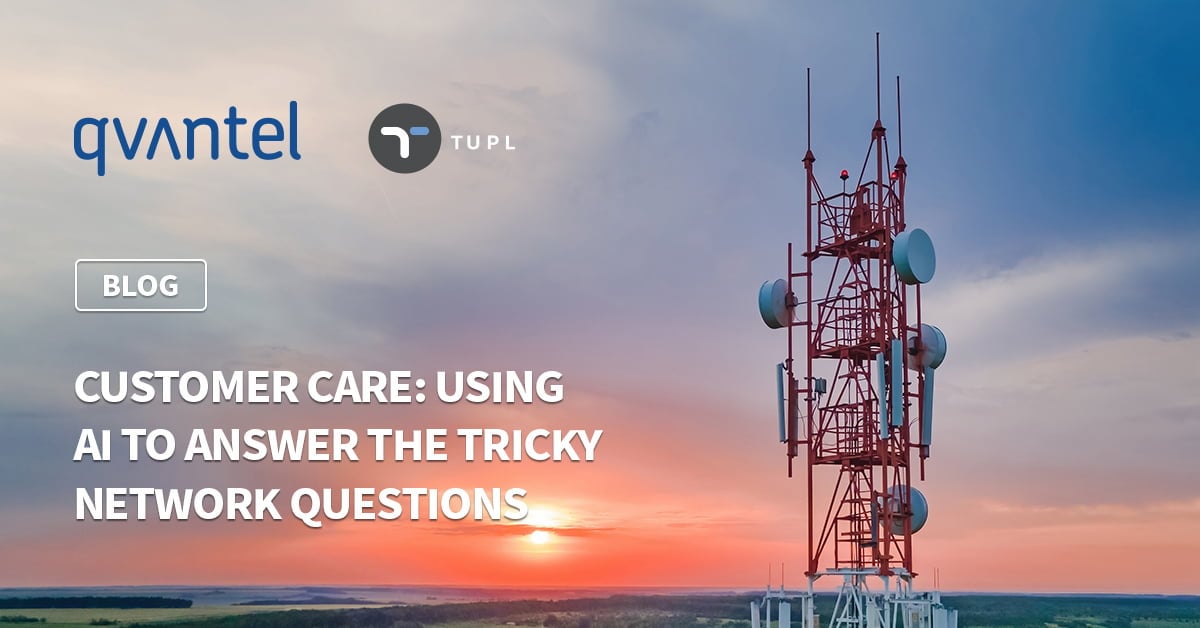Customer Care: Using AI to Answer the Tricky Network Questions

Ofcom, the UK regulator, carries out an annual survey about customer satisfaction in telecoms. The most recent report, Comparing Customer Service: Mobile, Landline and Home Broadband published in May 2023 covered customer data from 2022. Although this report just covers the UK market, it could be fair assumption that most developed and competitive telecoms markets could have similar issues to those identified in the report. The press release from Ofcom provides a good summary of these issues and what frustrates telecoms customers. Here’s a direct quote:
“We’ve asked telecoms customers what frustrates them most with their providers, and the message is clear: they want to get through to the right person on the phone quickly, and have their complaints dealt with the first time.
“With switching becoming simpler, providers that continue to let standards slip should expect customers to show them the door.” Ian Macrae, Ofcom’s Director of Market Intelligence
That’s fairly clear and to the point.
Combine this with the customer care performance figures in the report and it’s clear that there’s room for improvement. When a customer wants to get in touch and complain to their CSP most still prefer to call customer care (77% for mobile customers, 90% for fixed). Call waiting times could be improved with an average of 2 minutes 23 seconds for mobile and 2 minutes 37 seconds for fixed broadband. But 10% of mobile customers and 7% of fixed broadband customers give up and hang up before they get to speak to an agent. For those who don’t hang on and speak to a customer care agent, the majority don’t get their issues resolved on the first call, with first-call resolution rates of just 43% for mobile and 39% for fixed broadband.
Digging a bit deeper into why customers complain to their service providers, the most common areas for complaints to mobile CSPs are that the service is not performing as it should (47%) due to poor connectivity or loss of service. Next up were payment and billing issues (36%) and in third place were complaints about customer service (22%). For home broadband services 66% of complaints related to slow connection speeds or an intermittent or total loss of service. So, for both mobile and fixed services network issues top the league table when it comes to calls to customer care.
Answering these network-related questions requires access to a wide range of network and device-related data as there can be many reasons for poor network service. Unfortunately, not all customer service agents are equipped to deal with such questions. This can lead to customer frustration impacting net promotor score as well as increase CSP’s CRM costs and reduce first call resolution rates.
In order to provide a better customer care service to their customers, CSPs can use CRM systems that use AI to analyse vast amounts of data from many sources to generate a response that can be used by the customer care agent (or chatbot) to provide a quick resolution to customers’ questions. As the majority of complaints and calls to customer care agents relate to network issues, it would make perfect sense to incorporate network data and AI to enable customer care agents to answer questions about network issues. This is exactly what Qvantel has done by integrating Tupl Care AI into Qvantel Customer Care Copilot and Qvantel Flex BSS. This new functionality improves first-call resolution by enabling care agents to provide a simple response to customers for complex network issues.
The customer care agent just needs to enter some basic information such as the customer's phone number, location, and the type of problem that the customer is reporting. Then the data collection process is triggered, and the system starts compiling all the relevant data points for that customer. The AI engine then generates an analysis of the customer's problem and a recommendation (next best activity) which the care agent can present to the customer. This can cover network issues such as coverage and congestion, indoor coverage, provisioning issues, and device-related problems. As well as informing the customer of the problem and the solution, the agent can also send the AI-generated analysis and recommendation to the network team to fix the issues.
In addition to the above, also increasing the first call completion rate, adding network data and AI-driven analysis and recommendations for network-related issues has been proven to increase NPS, reduce CRM operational costs as well as increase up-sell of new devices.
To find out more about how to use AI to improve customer care for network-related issues, download the Qvantel and Tupl paper on turning care agents into virtual network experts.
Sreenivasa Sarma Telakapalli
Senior Presales Consultant, Qvantel
David Palacios
Telco Product & Engineering Director, Tupl
